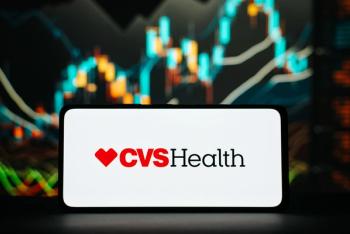
Generic drug use varies widely by state
Generic drug use varies widely by state, according to an Express Scripts study that measured per-capita generic drug utilization in 2003 using a random sample of approximately three million pharmacy benefit plan members.
Generic drug use varies widely by state, according to an Express Scripts study that measured per-capita generic drug utilization in 2003 using a random sample of approximately three million pharmacy benefit plan members.
Express Scripts, headquartered in St. Louis, provides pharmacy benefit management services to more than 50 million patients through facilities in 13 states and Canada.
The health plan sponsors for these beneficiaries included private- and public-sector employer groups, managed care organizations, third-party administrators, and unions. Plan sponsors excluded were Medicare, Medicaid, and 100% co-pay plans, which would have skewed upward the generic fill rate.
The generic fill rate was calculated as the total number of generic prescription claims divided by total prescription claims. This percentage was age/gender adjusted using a generalized linear model. The extremal quotient (the ratio of lowest to highest rate), or EQ, was used as a measure of variation in state generic fill rates. The EQ was calculated as the maximum prevalence rate divided by the minimum rate. Only those states with at least 1,000 Express Scripts members were included in the results. Motheral pointed out that there are numerous possible explanations for the variations in generic fill rates.
Variations in use "Variations in prescribing patterns, state regulations, differences in disease prevalence, and varying use of drug benefit designs that encourage greater use of generics are all factors that could possibly contribute to the variations in generic use," Motheral said. "Significant variations in the use of generics exist across states, even greater variation than that seen previously for overall prevalence of prescription use. These findings suggest opportunities exist to achieve greater savings through adoption of programs designed to increase generic use in states with lower generic fill rates."
Encouraging generics Branded pharmaceutical products accounting for more than $38 billion in sales in 2003 are expected to lose patent protection by the end of 2008. Taking advantage of generics can result in significant savings. According to Express Scripts statistics, for every 1% increase in generic use, Rx benefit plan sponsors save nearly 1% off their cost for drugs in providing the benefit. The company's overall generic dispensing rate increased to 51% in the third quarter of 2004.
The generic variation study is the second Express Scripts study to examine geographic variations in prescription drug use, according to Express Scripts spokesman Derrell Carter. In 2001, Express Scripts' research in geographic variation in Rx drug use found significant variations in the prevalence and use of Rx medication overall and across many therapy classes. "We continually monitor generic prescribing, which includes understanding how generic use varies by state," he said.
"Generic drugs are the key to managing the growing cost of prescription drugs, making it possible for plan sponsors to continue to provide an attractive prescription benefit for their members," added Motheral.
As such, Express Scripts has designed numerous programs for plan sponsors that promote the cost-saving opportunities associated with generics, saving money for both plan sponsors and their members.
GenericsWork, a generics-focused program, provides savings opportunities for plan sponsors and members by promoting the use of generics and low-cost brands. Plan sponsors that implement Generics-Work should see their generic fill rate increase to 75%, according to Express Scripts. A plan sponsor providing Rx benefits for 100,000 members would realize an estimated $25 million in savings over three years using the program.
Newsletter
Pharmacy practice is always changing. Stay ahead of the curve with the Drug Topics newsletter and get the latest drug information, industry trends, and patient care tips.























































































































